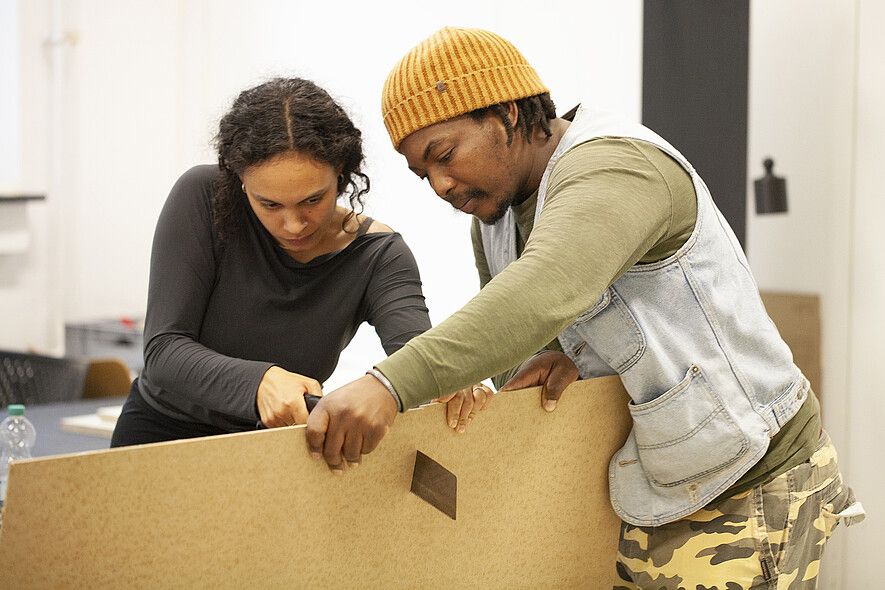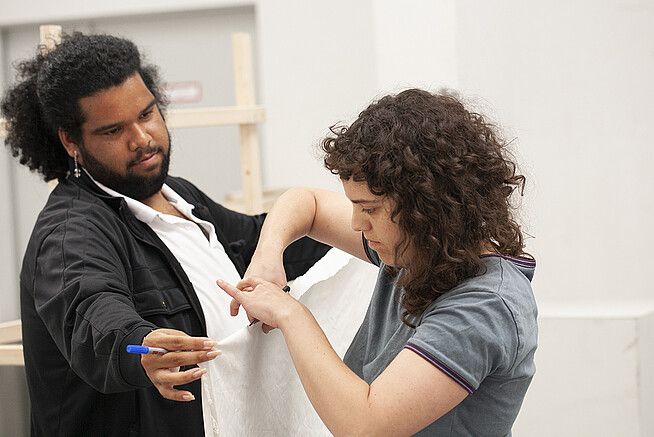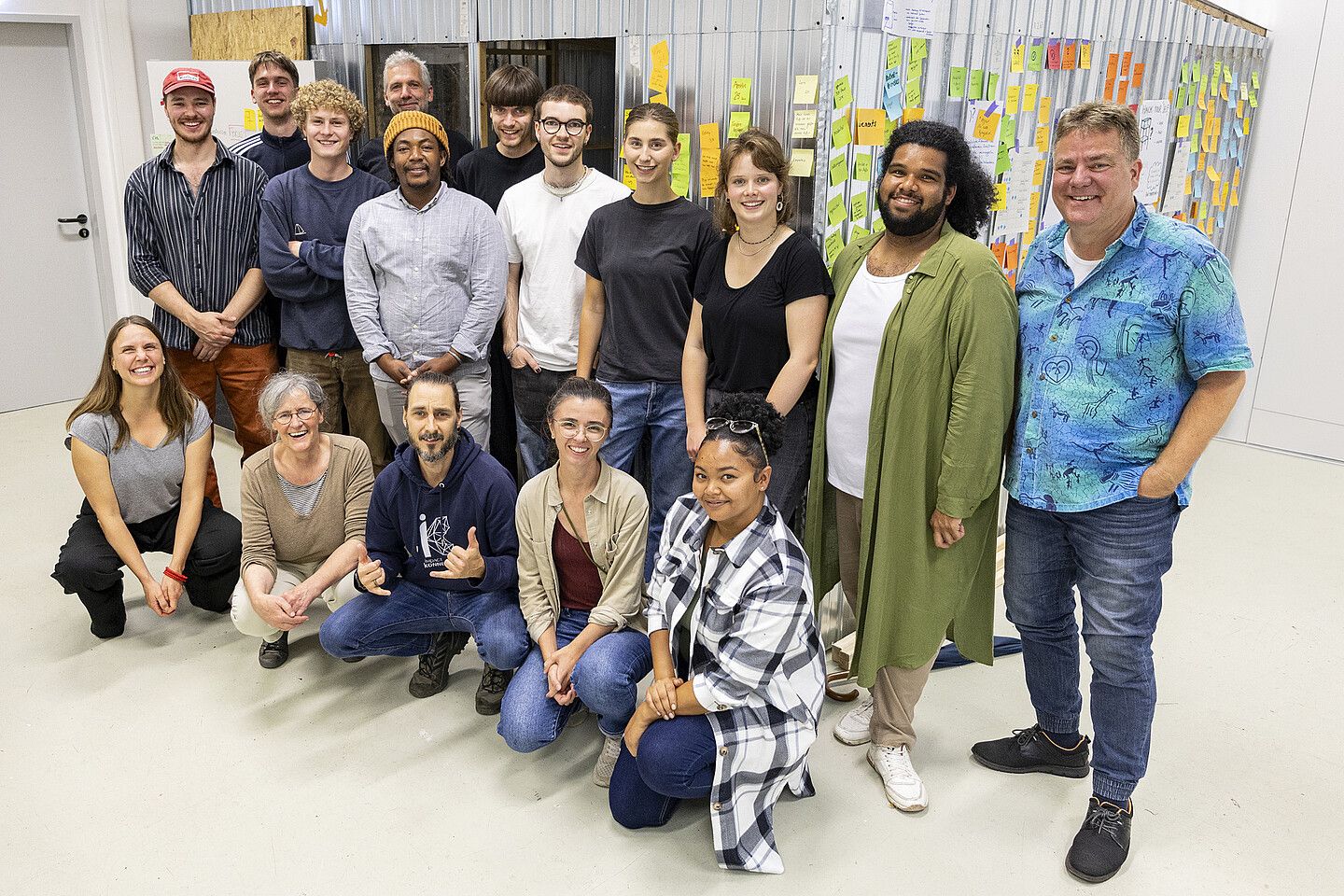Social Design Sprint (SS 24)
Students designed inexpensive, modular and space-efficient furniture and produced a video tutorial for DIY construction based on specifications from the townships in Cape Town. The project aimed to reinforce the idea of social sustainability and open up new perspectives: What does it mean to have only limited resources at your disposal? Which design aspects are relevant here, and which are not? How can clear instructions be created in just a few steps? What does it take to empower people to build do-it-yourself furniture? These were the central questions for the young design students.
A change of perspective took place during a four-day workshop. The challenges faced by the people in the townships of Cape Town, as well as their know-how and insights, formed the framework for the project. The virtual exchange with Siyanda Sopangisa from Khayelitsha was an essential part of the entire process. In Khayelitsha, many people live in shacks with very little space and rudimentary infrastructure. Furniture is expensive and there are hardly any DIY instructions that can be implemented with local materials and tools.
For the project, the shack from last year’s RWTH project was set up in the FH Design Building. This created even more realism to support the unusual work process. Siyanda was also impressed during the video call by how close the students were to the actual situation in Khayelitsha.
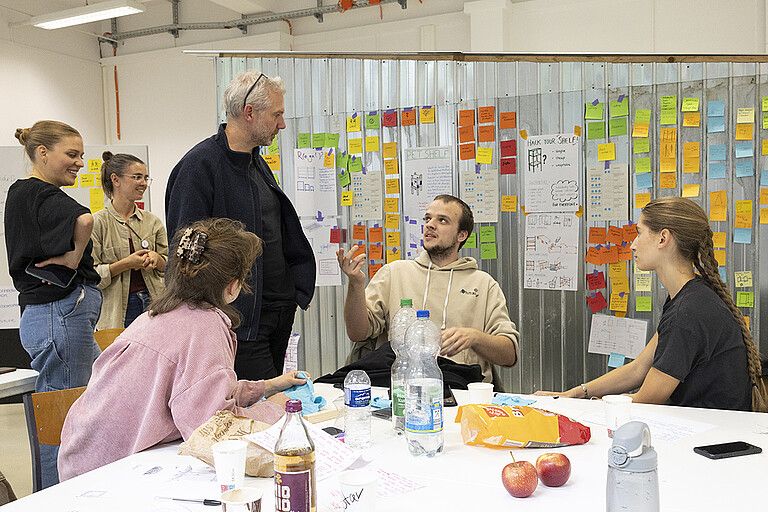
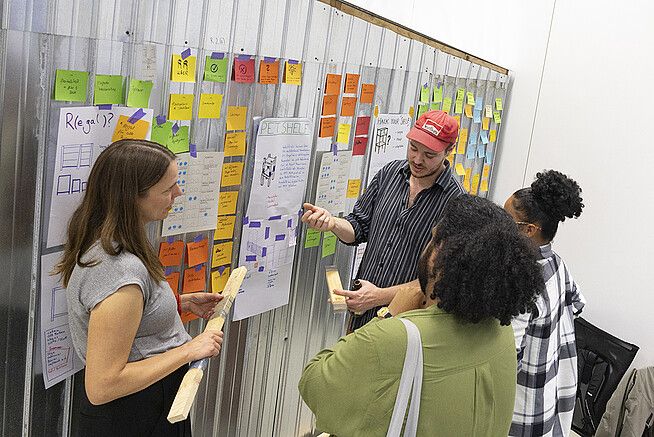
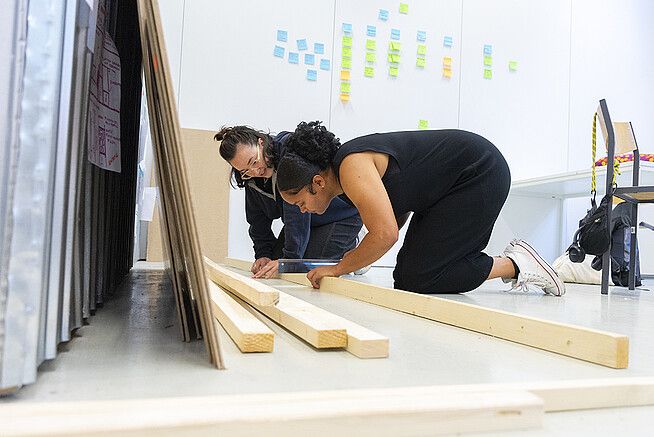
The students developed furniture concepts that are inexpensive, easy to replicate and space-saving. The workshop was led by Marlene Lerch and Rebecca Gros. Professor Sönke Hoof provided content and constructive support for the process. The project took place outside the regular curriculum and was intended to broaden the students’ perspectives. However, the project is not only about raising awareness, creating points of contact and facilitating exchange. ‘When you have less at your disposal, you have to work more creatively. This is an important learning effect for our students, which is also extremely relevant in the local context,’ says Sönke Hoof. Until now, the availability of resources has generally played a subordinate role in the design process.
The students developed ideas around the theme of ‘shelving’. One approach was a plug-in system in which melted plastic bottles ensure a stable connection between the individual elements, which can thus be combined in many different ways. Another idea was to create fabric wardrobe doors that also function as room dividers and can create privacy. The students then created video tutorials that are as self-explanatory as possible. You can watch the videos on our YouTube channel:
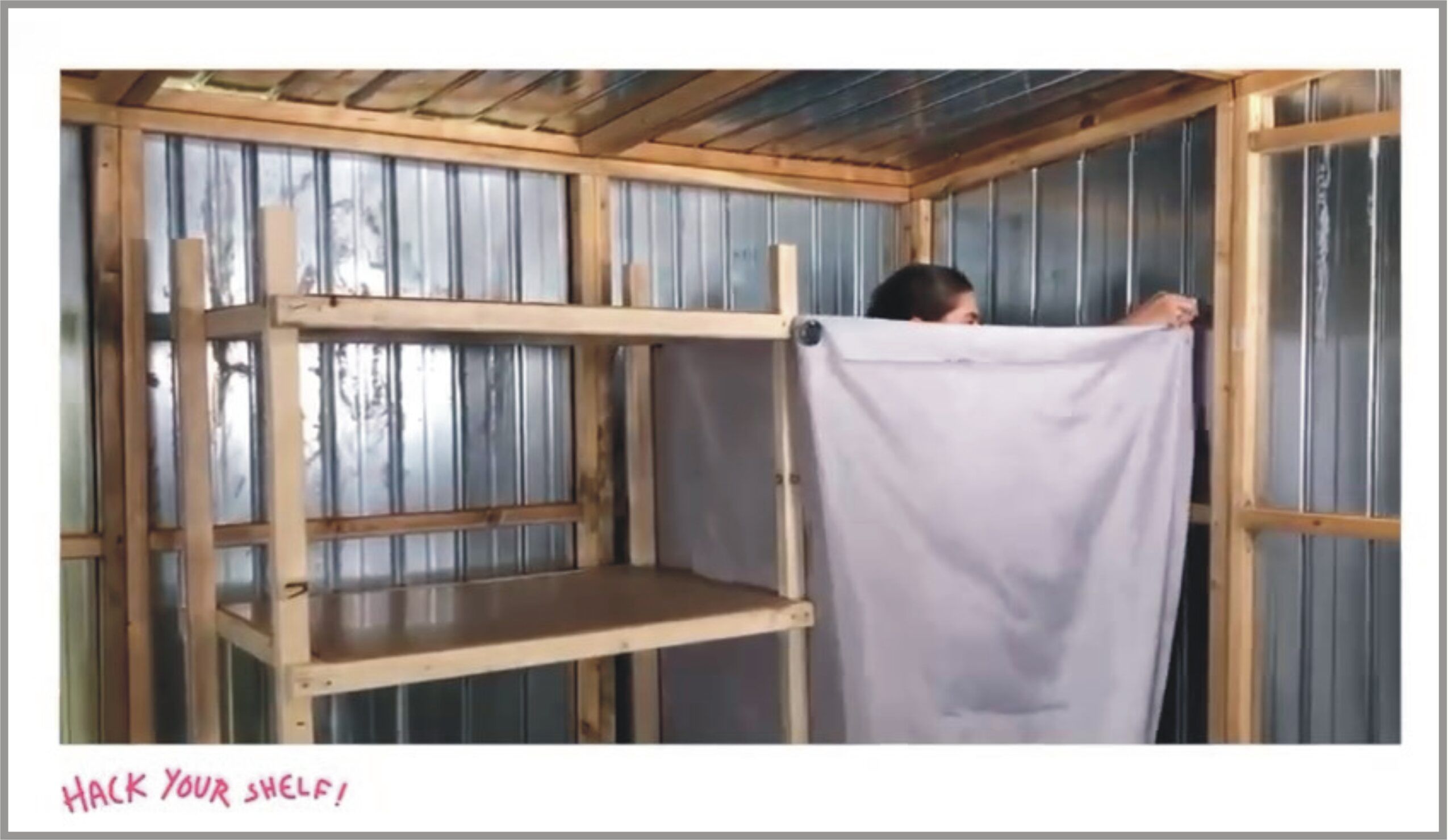
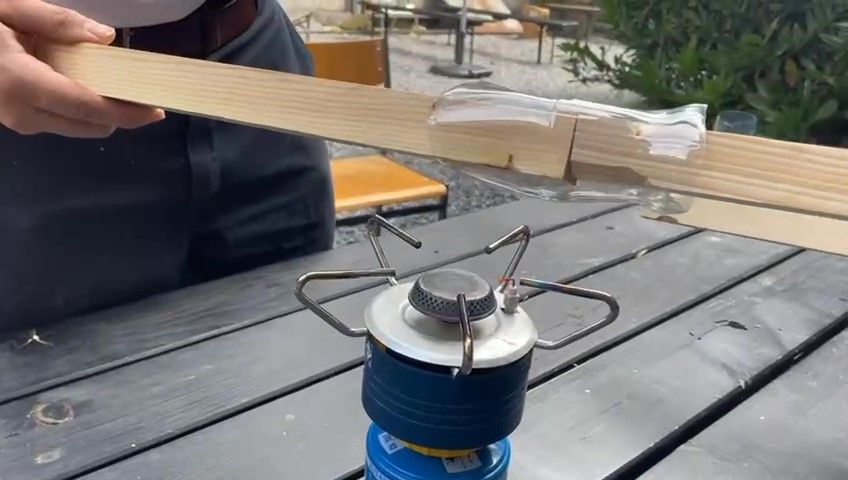
These were tested on the last day with South African ASA participants Jamie-Leigh Isaacs, Ismail Johnson and Zukisa Mayeza. The conclusion: the resulting prototypes are relevant, understandable, simple and inexpensive to implement.
